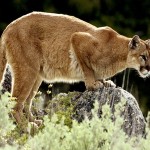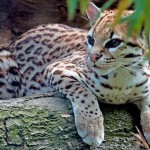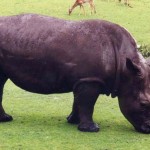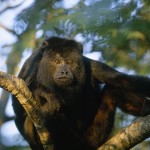Archive for January, 2011
-
Siberian Tiger facts
Posted in Wildlife A-Z | January 25, 2011 Also known as Amur, a Siberian tiger refers to the giant carnivores that mostly tend to survive in the coldest regions of our planet. It is certainly the largest cat in the world, but is sadly today among the endangered animals. Currently, these superb tigers are seen typically in southeastern Russia, especially in Siberia; which says much about their origins. Although they were seen in plenty in Korea, Mongolia, as well as China; illegal poaching has reduced their numbers here. Across the world, it is now accepted that some 350 to 400 tigers only survive in the forests and other 500 in the zoos. In order to save them, efforts have been made due to which now they are heavily safeguarded in wild, but a majority of them are now in zoos. These [...]
Also known as Amur, a Siberian tiger refers to the giant carnivores that mostly tend to survive in the coldest regions of our planet. It is certainly the largest cat in the world, but is sadly today among the endangered animals. Currently, these superb tigers are seen typically in southeastern Russia, especially in Siberia; which says much about their origins. Although they were seen in plenty in Korea, Mongolia, as well as China; illegal poaching has reduced their numbers here. Across the world, it is now accepted that some 350 to 400 tigers only survive in the forests and other 500 in the zoos. In order to save them, efforts have been made due to which now they are heavily safeguarded in wild, but a majority of them are now in zoos. These [...] -
Mountain Lion facts
Posted in Wildlife A-Z | January 18, 2011 Also called cougars, the Mountain Lions are American wild cats seen extensively in the Western hemisphere and called by separate names in different areas. With its 40 names, one of the most interesting Mountain Lion facts is that this cat’s name is recorded in the Guinness World Record as the only mammal having maximum different names. Some of these include – puma, panther, silver lion, deer cat, Mexican lion, king cat, mountain devil, red tiger, and so on. Despite the fact that ‘big cats’ are referred to the large looking wild cats such as leopard and jaguar; mountain lions, just due to their size, still belong to this category. After lion, tiger, and jaguar; mountain lions rank fourth along with leopard in the list of [...]
Also called cougars, the Mountain Lions are American wild cats seen extensively in the Western hemisphere and called by separate names in different areas. With its 40 names, one of the most interesting Mountain Lion facts is that this cat’s name is recorded in the Guinness World Record as the only mammal having maximum different names. Some of these include – puma, panther, silver lion, deer cat, Mexican lion, king cat, mountain devil, red tiger, and so on. Despite the fact that ‘big cats’ are referred to the large looking wild cats such as leopard and jaguar; mountain lions, just due to their size, still belong to this category. After lion, tiger, and jaguar; mountain lions rank fourth along with leopard in the list of [...] -
Ocelot Facts – The Exotic Cat That Is Now Endangered
Posted in Wildlife A-Z | January 11, 2011 The ocelot is ideally twice the size of the average house cat. It is a sleek animal and the most identifiable characteristic has to be its dappled coat, which is best described as ‘gorgeous’. These nocturnal cats are known to use their keen hearing capabilities and sight so as to hunt down their prey. They ideally hunt on rodents, rabbits, iguanas, frogs and fish. They also generally take to the trees; and this is what adds the stalking of birds and monkeys to their list. Unlike most cats who will avoid water, one of the most interesting and distinguishing of the ocelot facts is that they are indeed good swimmers. Ocelot Facts – Location: Ocelots are generally found in Central and South America, Texas and other states of United States [...]
The ocelot is ideally twice the size of the average house cat. It is a sleek animal and the most identifiable characteristic has to be its dappled coat, which is best described as ‘gorgeous’. These nocturnal cats are known to use their keen hearing capabilities and sight so as to hunt down their prey. They ideally hunt on rodents, rabbits, iguanas, frogs and fish. They also generally take to the trees; and this is what adds the stalking of birds and monkeys to their list. Unlike most cats who will avoid water, one of the most interesting and distinguishing of the ocelot facts is that they are indeed good swimmers. Ocelot Facts – Location: Ocelots are generally found in Central and South America, Texas and other states of United States [...] -
Javan Rhino – Rhinoceros Sondaicus
Posted in Wildlife A-Z | January 6, 2011 The Javan rhinoceros is the name of a herbivorous creature that belongs to the order of Perissodactyla and is said to be one of the three species of rhinos that are native to the Asian continent. This lesser one-horned rhino is perhaps the rarest of the large mammal species in the world. What we mean by ‘rare’ here is that it is almost on the brink of extinction. Lesser than 60 of these mammals are said to survive in the wild today; and none of these are in captivity. The Javan rhino is said to exist in two protected areas – Ujung Kulon National Park (Indonesia) and Cat Tien National Park (Vietnam). However, owing to the pressures of human population and the ever-increasing threat of poaching, things do not look too bright. The WWF is [...]
The Javan rhinoceros is the name of a herbivorous creature that belongs to the order of Perissodactyla and is said to be one of the three species of rhinos that are native to the Asian continent. This lesser one-horned rhino is perhaps the rarest of the large mammal species in the world. What we mean by ‘rare’ here is that it is almost on the brink of extinction. Lesser than 60 of these mammals are said to survive in the wild today; and none of these are in captivity. The Javan rhino is said to exist in two protected areas – Ujung Kulon National Park (Indonesia) and Cat Tien National Park (Vietnam). However, owing to the pressures of human population and the ever-increasing threat of poaching, things do not look too bright. The WWF is [...] -
Hawaiian Monk Seal – 2nd Most Endangered Seal
Posted in Wildlife A-Z | January 4, 2011 The Hawaiian monk seal is one of the most endangered seal species in the waters of the United States of America. Only about 1,200 of them are said to be left. The most endangered seal species is another monk seal, the Mediterranean monk seal, which is said to have only about 600 of them left in the Mediterranean seas. There used to be a third species of the monk seal, called the Caribbean monk seal, which is now extinct. About Hawaiian Monk Seals: The scientific name for the Hawaiian monk seal is Monachus Schauinslandi. These animals are known to inhabit the northwestern part of the Hawaiian Islands, and they spend a lot of time at sea. Believe it or not, these creatures can dive as deep as 600 feet, and can stay under water for a good 20 minutes. Diet: Their [...]
The Hawaiian monk seal is one of the most endangered seal species in the waters of the United States of America. Only about 1,200 of them are said to be left. The most endangered seal species is another monk seal, the Mediterranean monk seal, which is said to have only about 600 of them left in the Mediterranean seas. There used to be a third species of the monk seal, called the Caribbean monk seal, which is now extinct. About Hawaiian Monk Seals: The scientific name for the Hawaiian monk seal is Monachus Schauinslandi. These animals are known to inhabit the northwestern part of the Hawaiian Islands, and they spend a lot of time at sea. Believe it or not, these creatures can dive as deep as 600 feet, and can stay under water for a good 20 minutes. Diet: Their [...] -
Howler Monkey – Loudest Species In The Animal Kingdom
Posted in Wildlife A-Z | January 1, 2011 Howlers are found in the regions of tropical Central and South America. They are New World Monkeys and are aptly named for their cries that can be described as being cacophonous. When a number of them begin letting their lungs loose in concert, the cacophony can be heard till a distance of about three miles away. The male howler monkey is said to be blessed with a specialized vocal chamber which is shell-like. This will help them to turn up their volume so that you can hear this distinctive call. The noise will help to send out a clear message to all of the other monkeys in the region; thus telling them that this territory has already been taken over by a troop. These vocal primates can boast of being the biggest of all the New World monkeys. [...]
Howlers are found in the regions of tropical Central and South America. They are New World Monkeys and are aptly named for their cries that can be described as being cacophonous. When a number of them begin letting their lungs loose in concert, the cacophony can be heard till a distance of about three miles away. The male howler monkey is said to be blessed with a specialized vocal chamber which is shell-like. This will help them to turn up their volume so that you can hear this distinctive call. The noise will help to send out a clear message to all of the other monkeys in the region; thus telling them that this territory has already been taken over by a troop. These vocal primates can boast of being the biggest of all the New World monkeys. [...]


